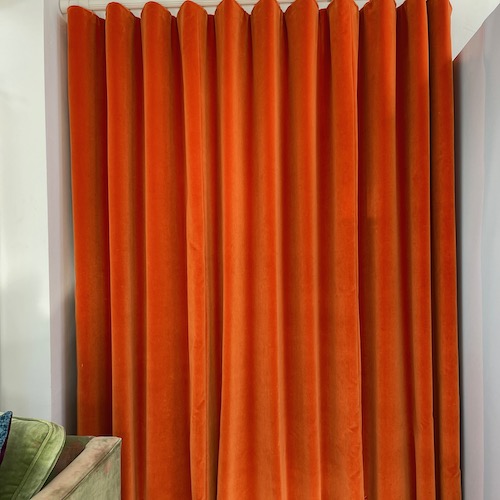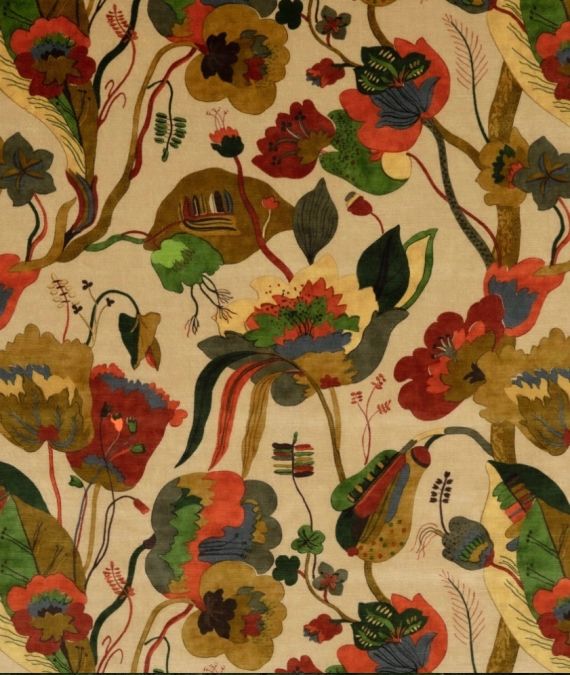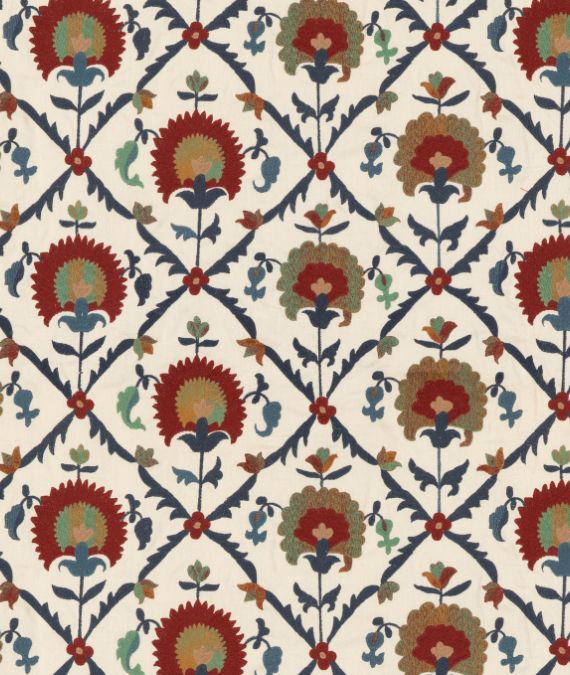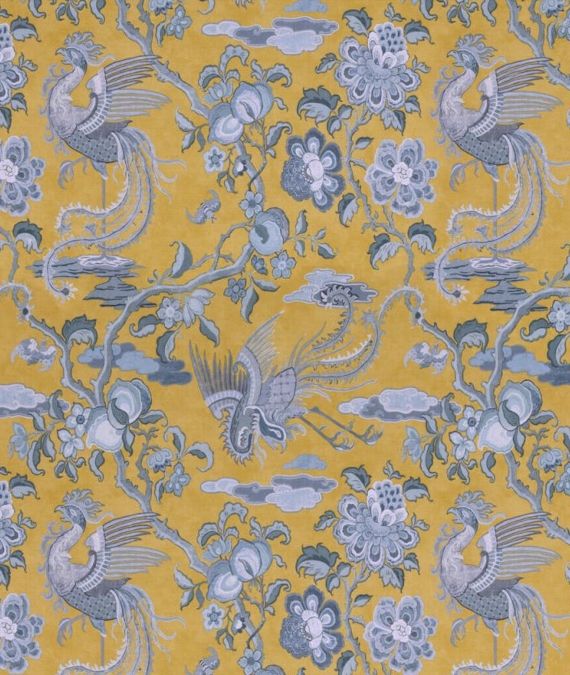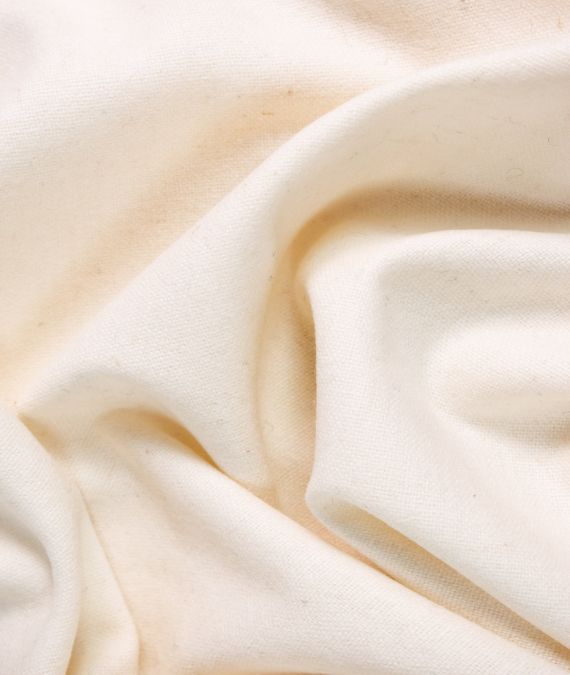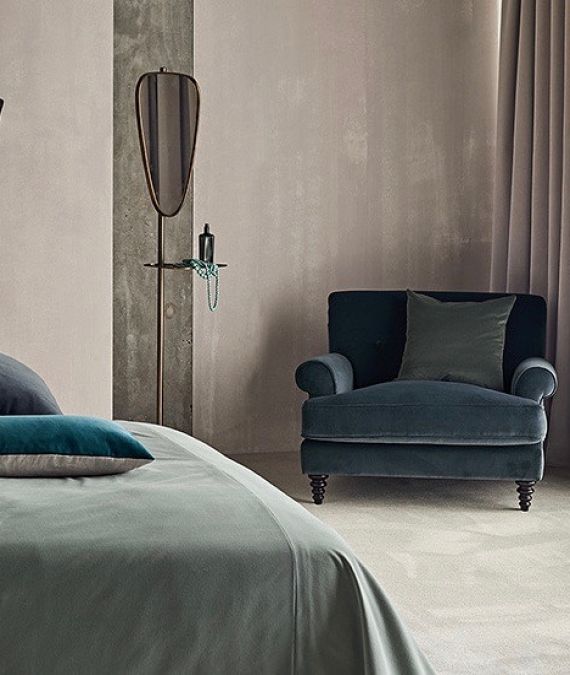Curtains and Roman Blinds

At CLOTH we offer a curtain making and roman blind making service to customers who choose our fabric. Customers also buy our fabric and make the curtains and blinds themselves or they have their own curtain maker.
Our Service
In the shop our curtain and roman blind making service usually starts with a conversation based on the ideas the customer wants to pursue.
It might be curtains for every room in the house or hotel or it could be a wired curtain to hide a bin in a kitchen.
We can guide our customers towards which fabrics might work, advise about linings and give an estimate of how much fabric is required.
A quote can also be requested through this site by filling in this form.
We also recommend curtain fitters who supply and fit rails or poles They also take accurate measurements and hang the curtains. They work independently of us and invoice separately.
Wave Pleat Curtains - Mulberry Cotton Velvet Spice
Styles of Curtains
| Pencil Pleat: Informal and traditional style that works well in bedrooms and on smaller windows. Two times fullness is ideal for pencil pleats. |  |
| Double or triple pinch pleat: Pinch pleats curtains provide a smart tailored look create a uniform, neatly stacking curtain fold. This style needs at least two and half times fabric fullness. |  |
| Inverted Pleat: A modern twist on the pinch pleat giving a simpler cleaner line to the curtain header. The pinch pleat is placed at the back of the curtain, a bit like a box pleated skirt. |  |
| Wave Pleat: The wave pleat is a streamlined and symmetrical alternative to more elaborate pleated curtain headings. The wave is formed by sewing the fabric flat on to the heading tape, then the finished curtain is hung on carriers that come as part of the dedicated wave pleat track. We can recommend curtain fitters who supply and fit rails or poles. They also take accurate measurements and hang the curtains. |  |
| Eyelets: An eyelet curtain heading can provide a simple contemporary look and is used in conjunction with a traditional curtain pole. We only recommend using an eyelet header with light fabrics because it requires holes to be made in the fabric. Although the holes are sealed with the eyelet rings the fabric is intrinsically weakened and the weight of the hanging fabric pulls at the holes. It is also a style that is only suitable for curtains poles rather than tracks. It is not ideal for sheer fabric because the eyelet tape is visible. The advantage of eyelet curtains is that they are economical on fabric using one and a half to two times the fabric. |  |
Triple Pleat Header - Liberty Interior Fabric
Goblet Pleat Header (un stuffed) - Liberty Interior Fabric
Roman Blinds
We offer a Roman Blind making service. You can request a quote here. We can also recommend curtain fitters who will take accurate measurements and return to fit the finished blinds. If you are thinking of having the blinds inside the recess of the window we recommend that you hire a fitter because the measuring is critical. The fitters work independently of us and invoice separately.
Roman Blinds fold up into pleats when they are pulled up to open. They work best with fabric that folds neatly like linen or cotton but any fabric can used. Just like curtains they can be interlined to provide insulation from cold and noise or lined with blackout lining to eliminate early morning light.
| The blinds are made with horizontal slats, which are connected by cords in the back of the blind between the fabric and the lining. When the blind is lifted, the cords pull the slats together and bring the blind up into folded pleats. Roman blinds can be fitted either outside or inside the recess. They are easier to fit to the outside and because they sit above the window they allow more light in when they are open. |  |
Roman Blinds closed in Bay Window - Pierre Frey Zeppelin Fabric
Making your own curtains
In some ways curtains are some of the easiest projects to complete successfully. After all they are rectangles with straight lines! For example, small kitchen or bathroom window curtains don’t necessarily need to be lined (although we do recommend it to protect the fabric) and an informal header such as a pencil pleat can work well.
Pencil pleats are the simplest style for the home sewer. A gather tape is sewn flat to the top of the curtain and then the strings in the tape are pulled to gather the tape and the curtain into the desired pleats. The more sophisticated style of pinch pleats can also be achieved with a bit more thought and skill. A buckram tape is inserted between the lining and the fabric. This is then pinched into double or triple pleats at regular intervals along the width of the curtain and secured with stitching. A calculation must be done to ascertain how many pleats will bring the curtain to the desired width.
Measuring for Curtains – A Rough Guide For Estimating Fabric Amounts
The standard fullness for pencil or pinch pleat curtains is two and a half times. You could use slightly less for pencil pleats.
The track or pole will be positioned at least 4”/10cm above the window and extend between 6”/15cm and 20”/50cm either side. Measure the total width of the track or pole and add 6”/15cm for an overlap where the curtains close.
Measure the length. Decide where you want the curtains to finish. Half an inch from the floor is standard for full length curtains. Add hem and header allowance of 12”/30cm
Multiply the pole/track length by the fullness – 2.5 then divide this by the width of the fabric roll 54”/140cm. Round the answer up or down to tell you how many widths (drops) you will use in your curtains. If the answer is two each curtain will use one width of fabric. If the answer is three one width will be split so that each curtain uses one and a half widths.
Multiply the number of widths by the length including the hem and header allowance. This tell you how much fabric you will need if you are using plain fabric. (If you are using patterned fabric and you want to match the pattern from one width to the next the vertical length of the pattern repeat must be added.)
Example
The width of the pole is 230 cm and the length of the curtains when they are finished is 240 cm.
230cm x 2.5 = 575cm divided by 140 cm = 4.1
Round down to 4 widths
Finished length 240cm + 30cm (hem) = 270cm
270cm x 4 widths = 1080cm
Answer 10.8 metres of fabric are required
This pair of curtains will have two widths of fabric in each curtain.
Making Your Own Roman Blind
The traditional method of making a roman blind used a piece of 2 x 1 wood as long as the width of the blind, doweling rods the same length, narrow cords, small rings to thread the cords through, fabric and lining. We sell the cord and the rings in the shop.
Since the introduction of safety laws in 2010 pre made kits are used that use safety chain that breaks in emergencies. These kits are available to order through the shop. They are custom made to your measurements and take about two weeks to supply.
There are plenty of free You Tube tutorials available that show how to make roman blinds.
Latest Interiors - View More
 |
 |


